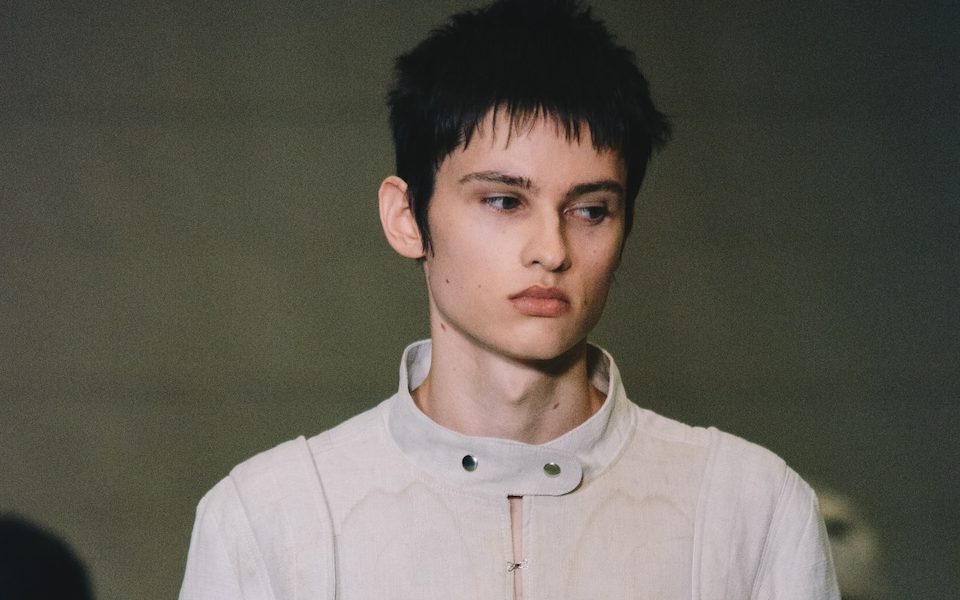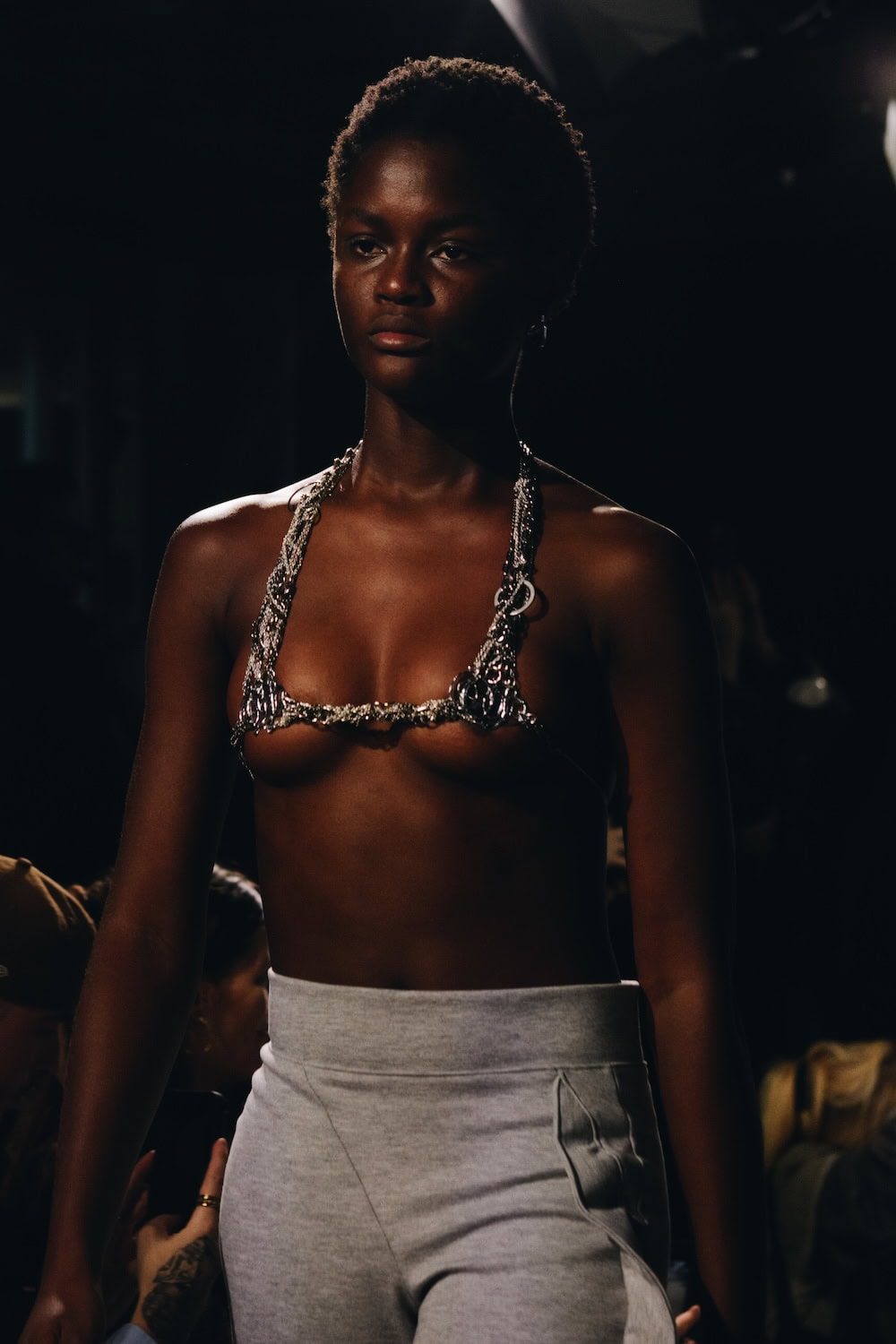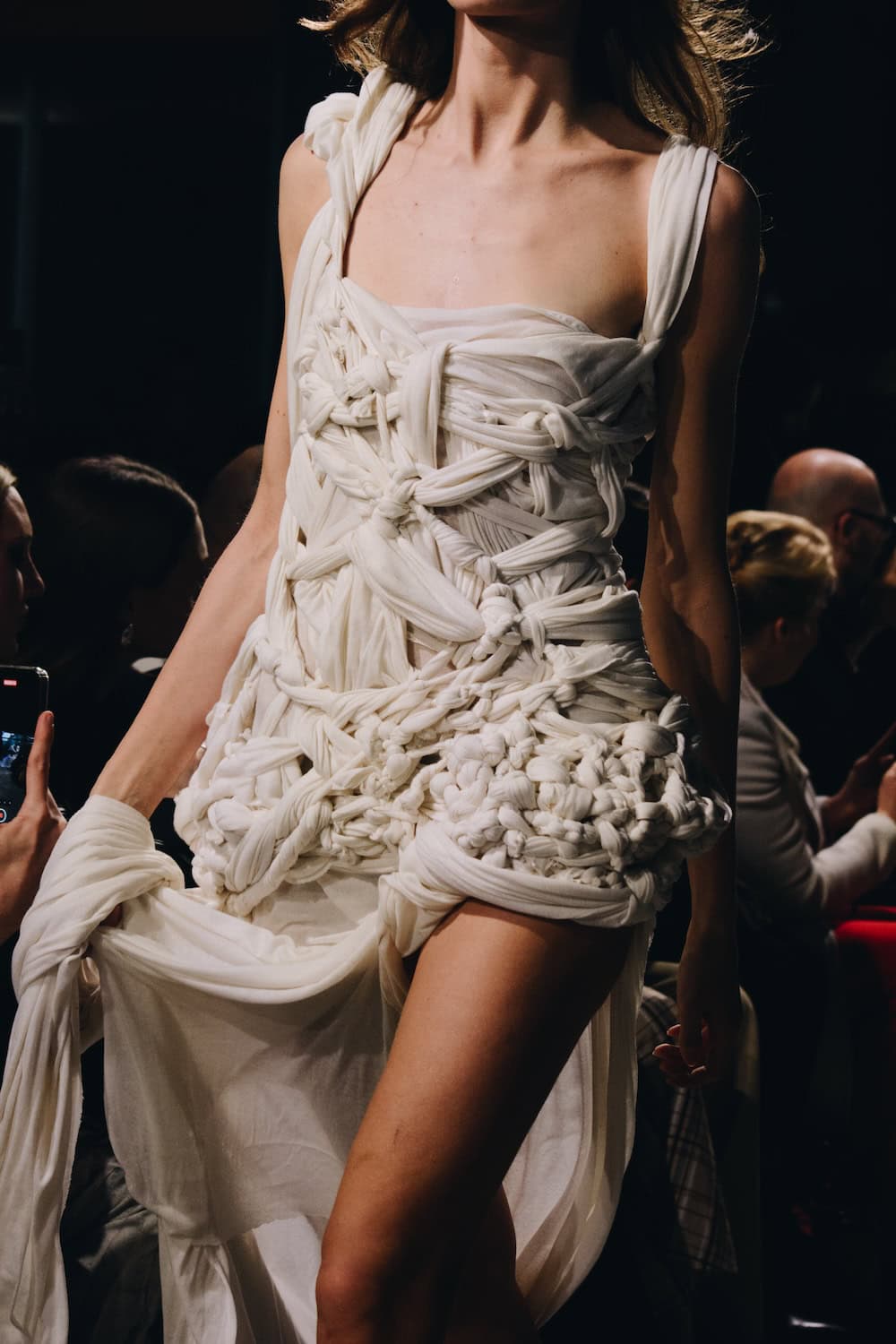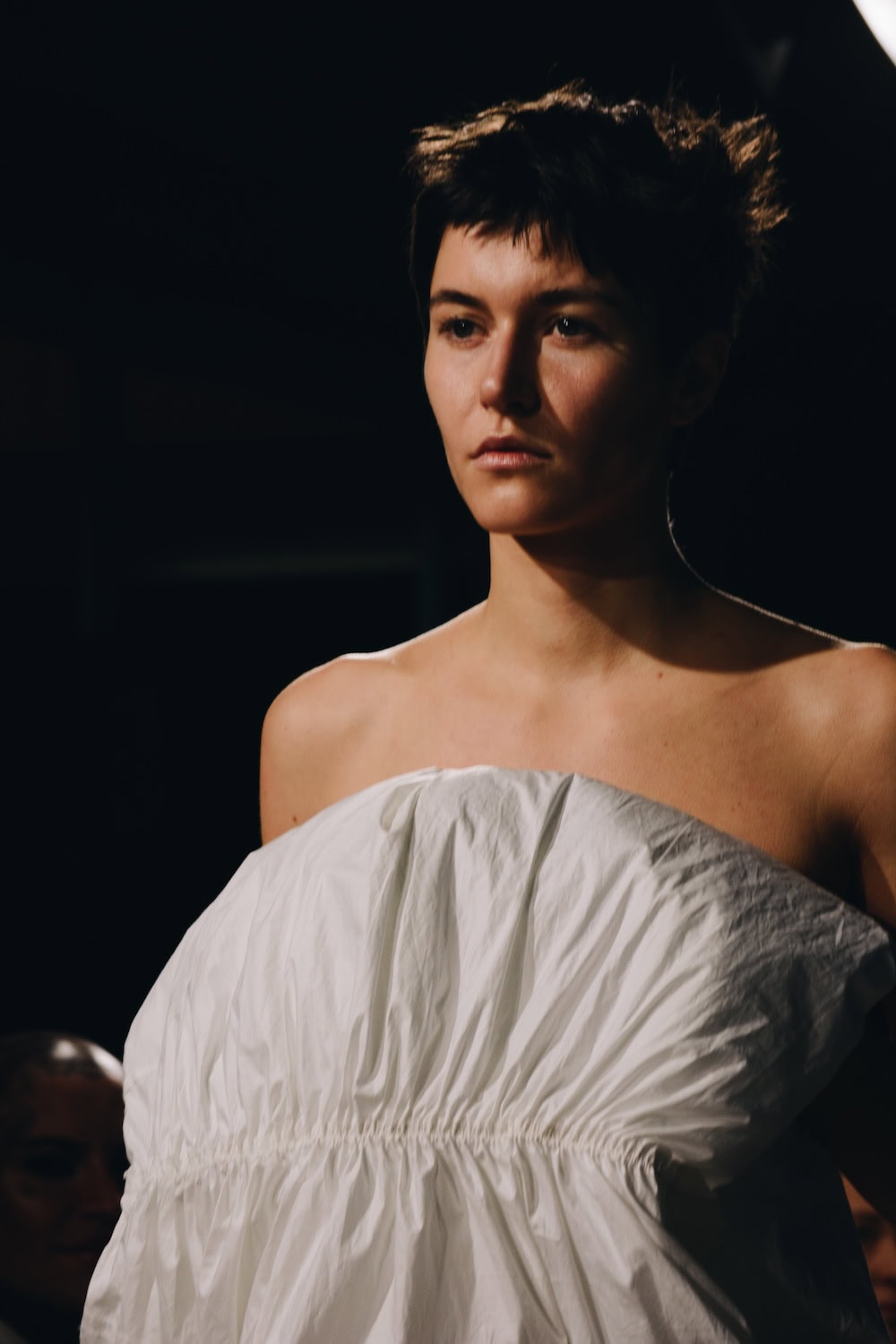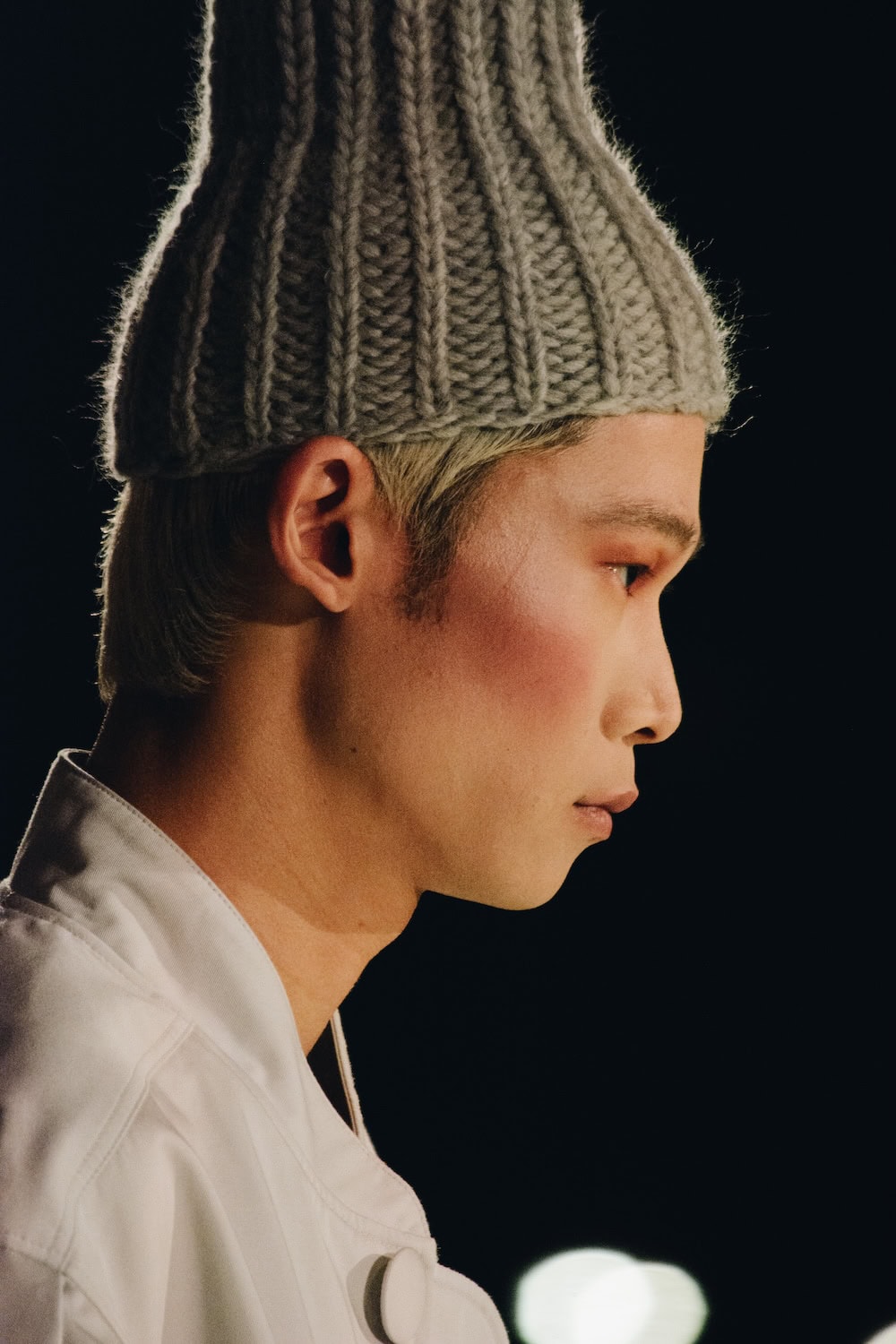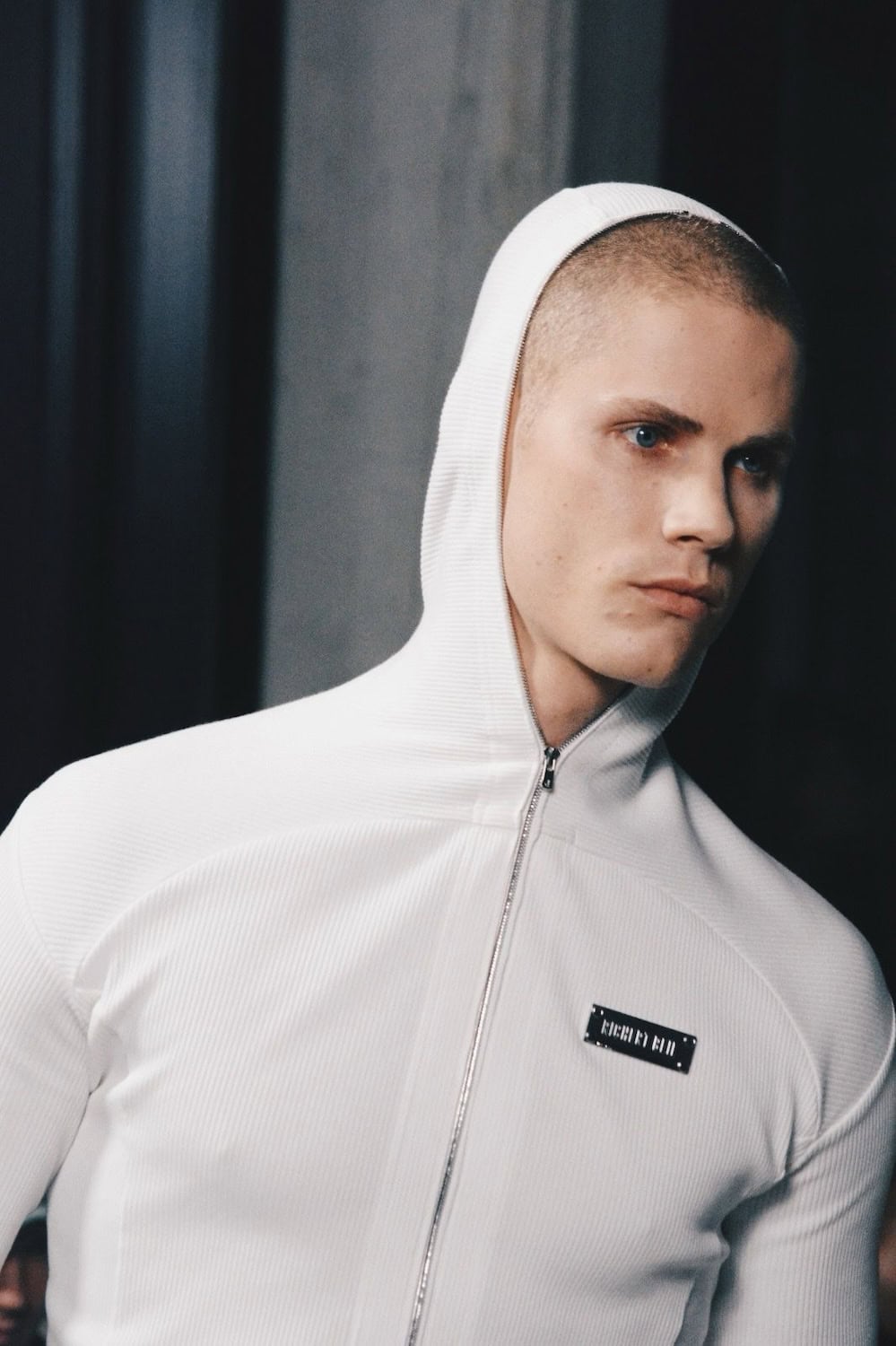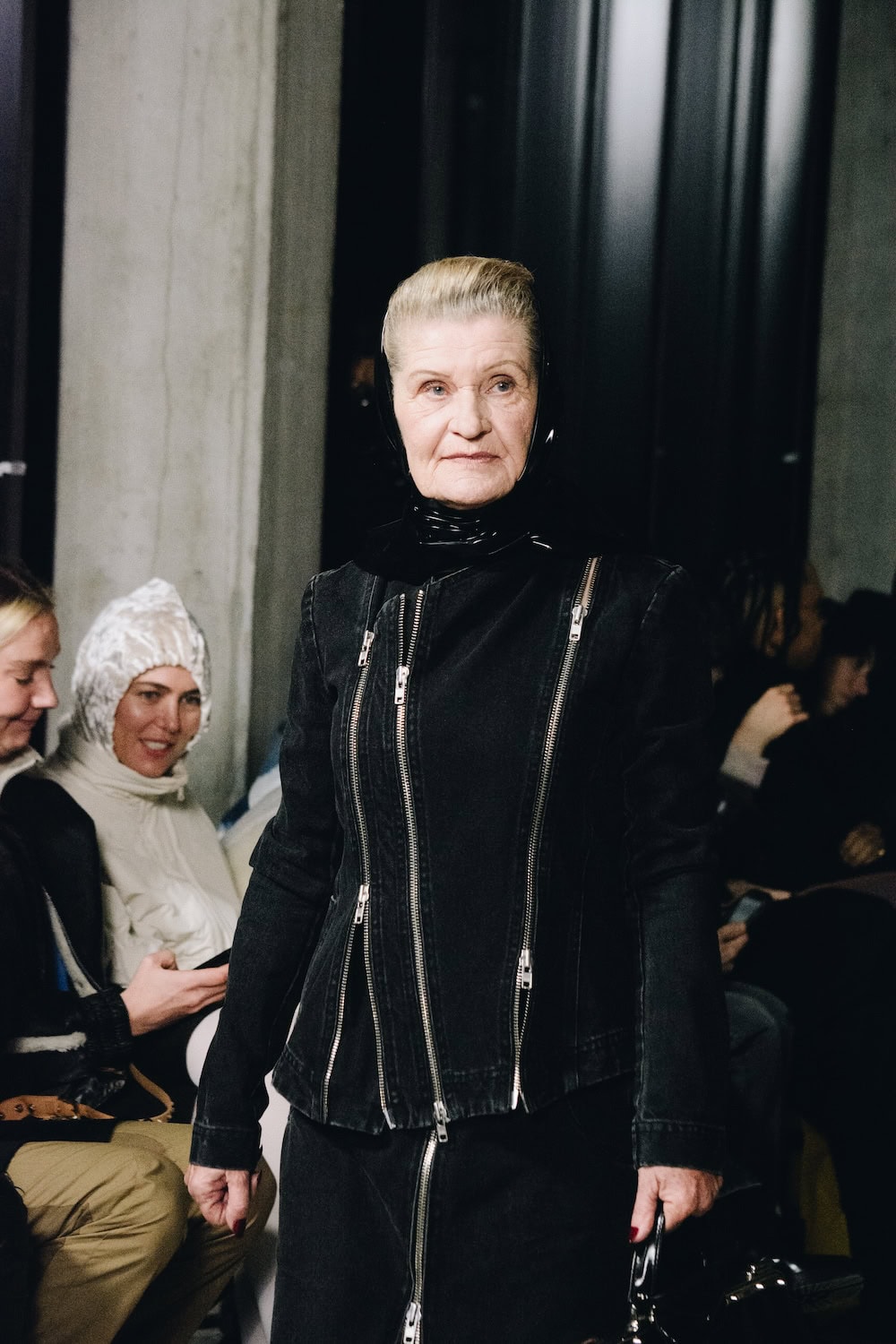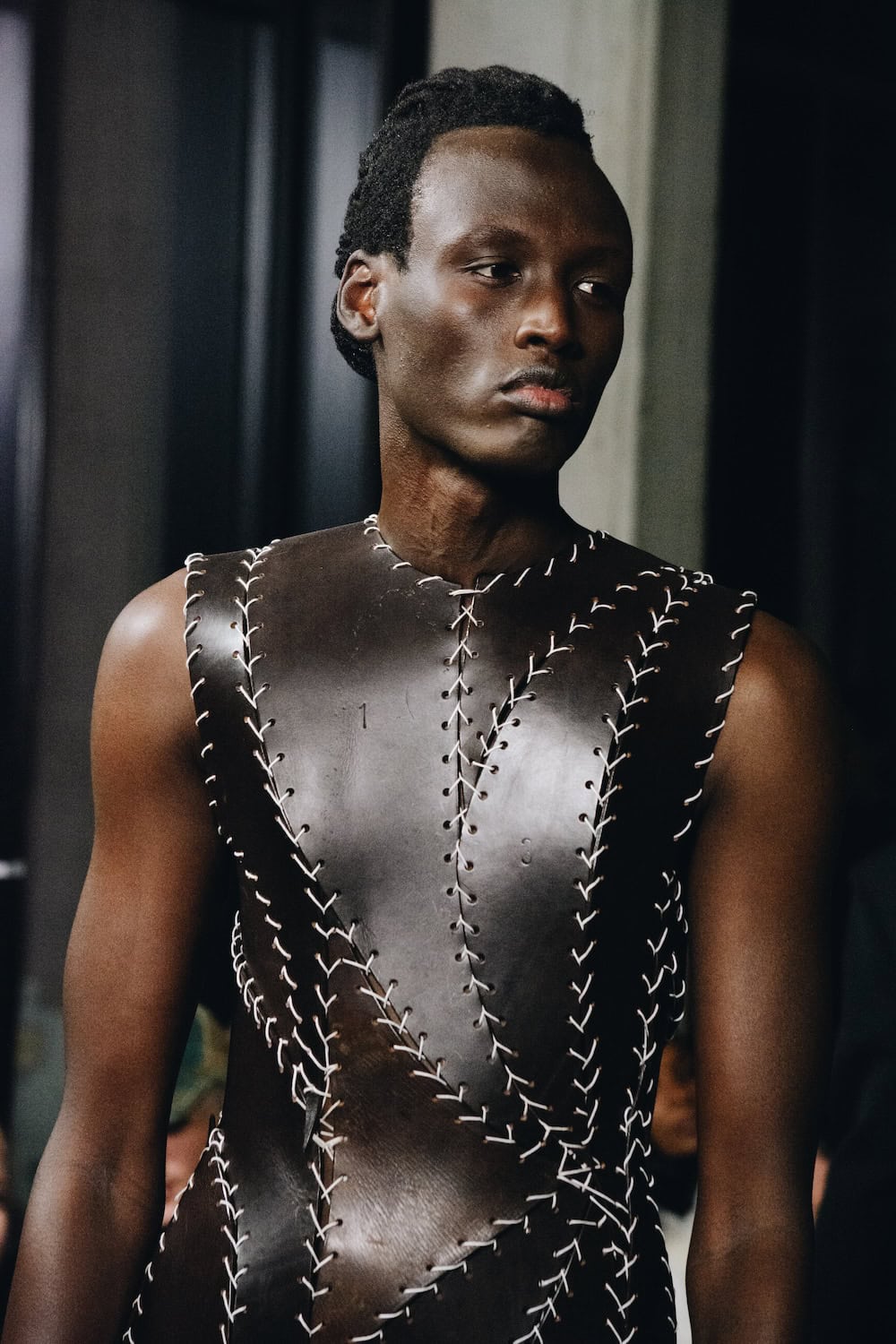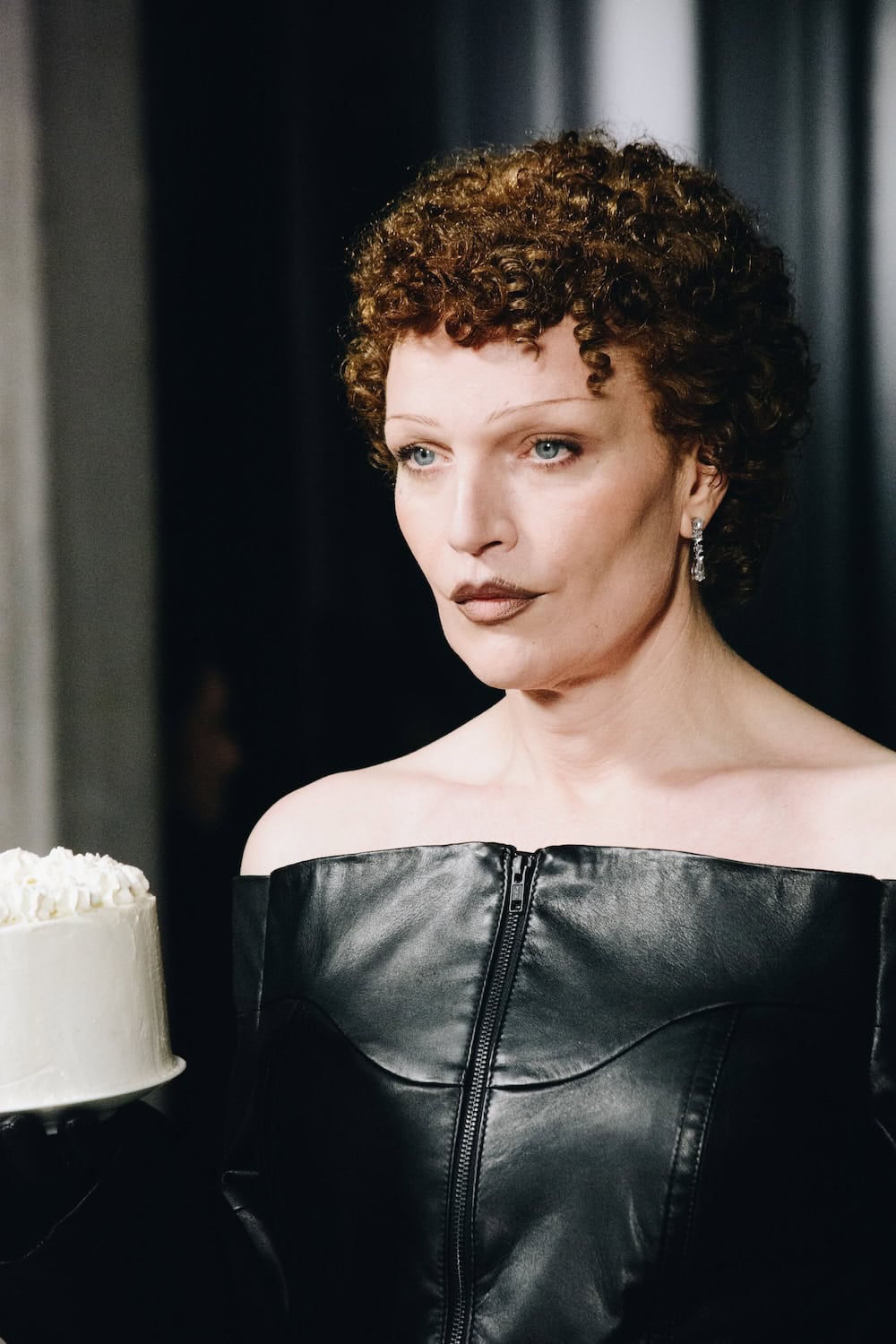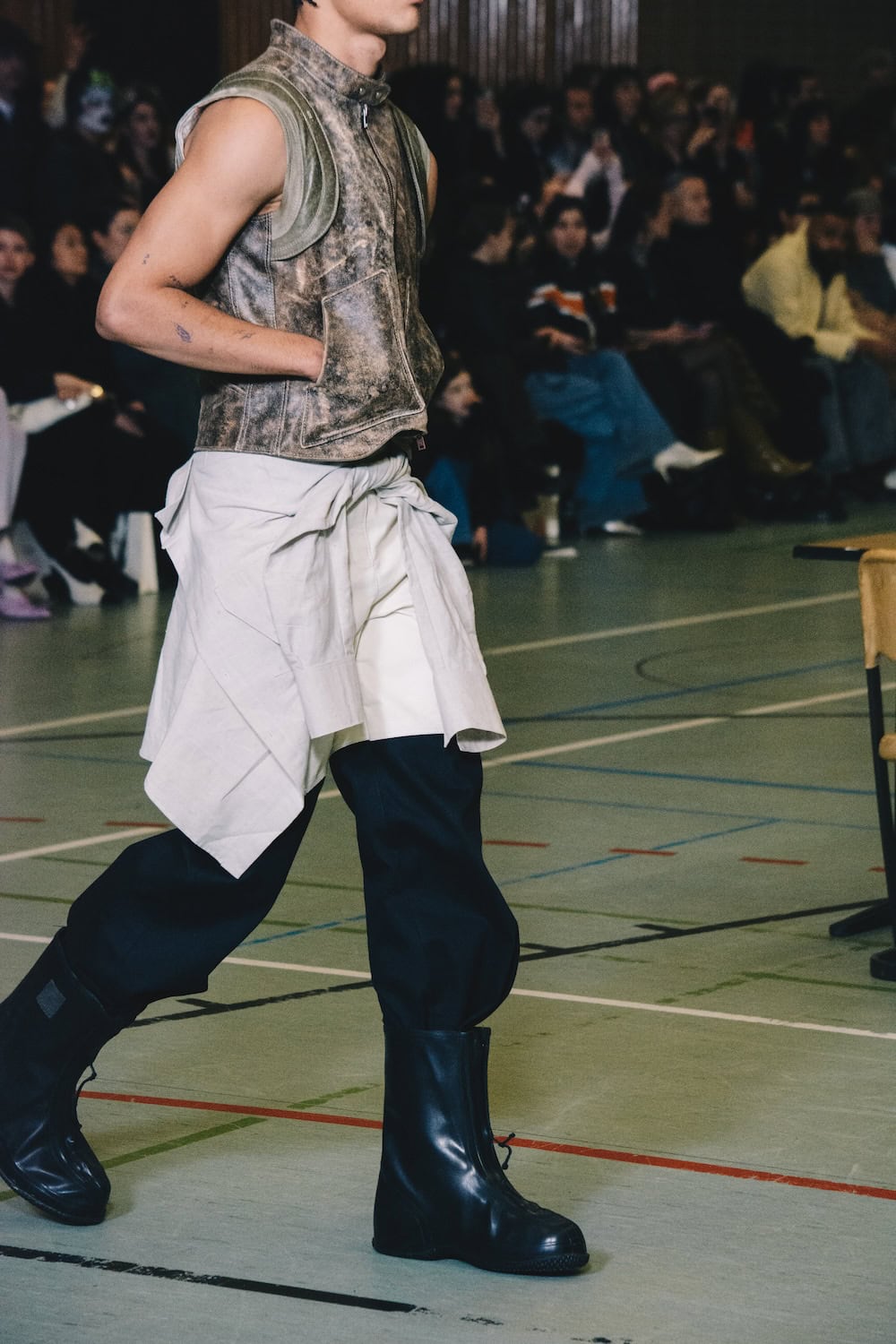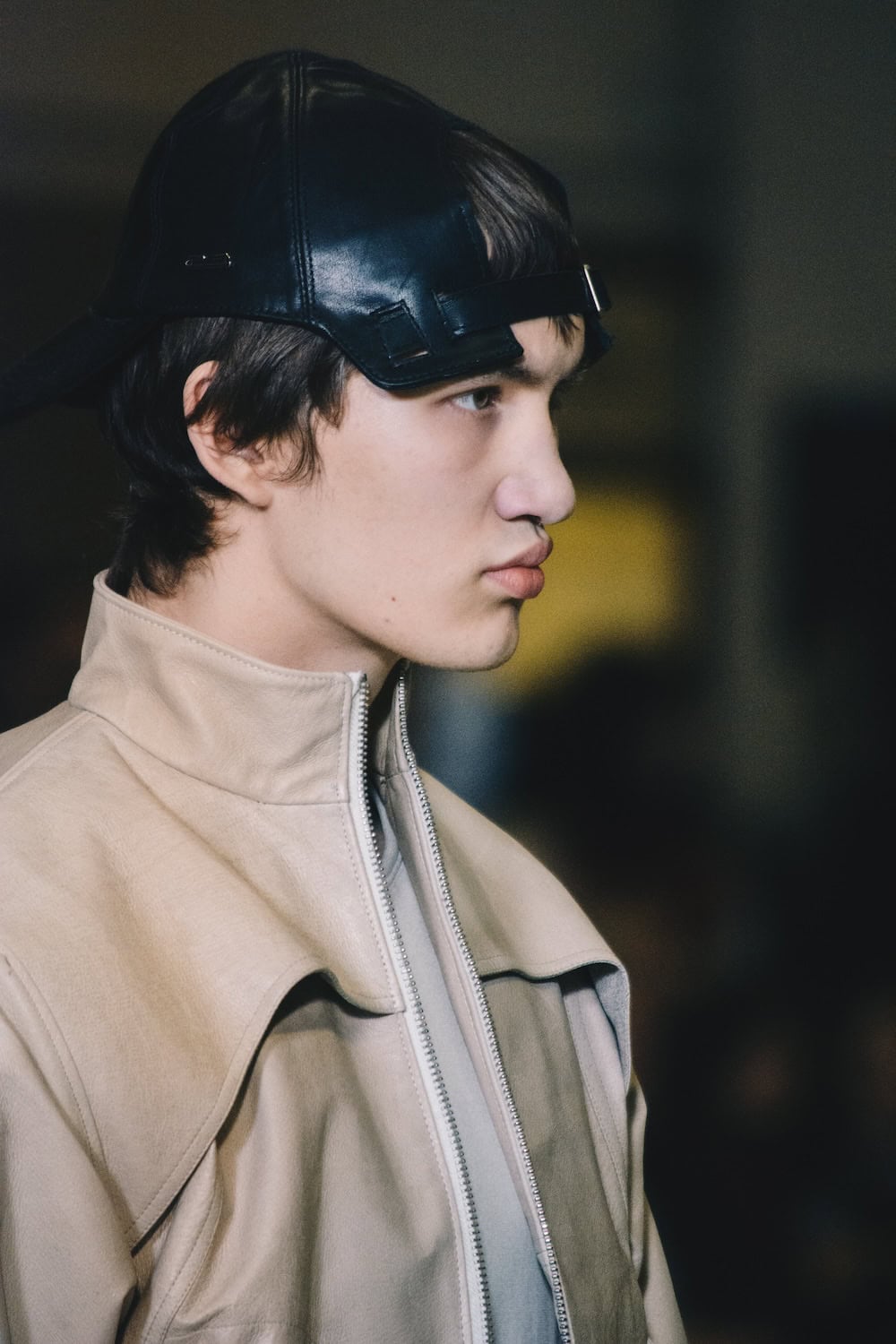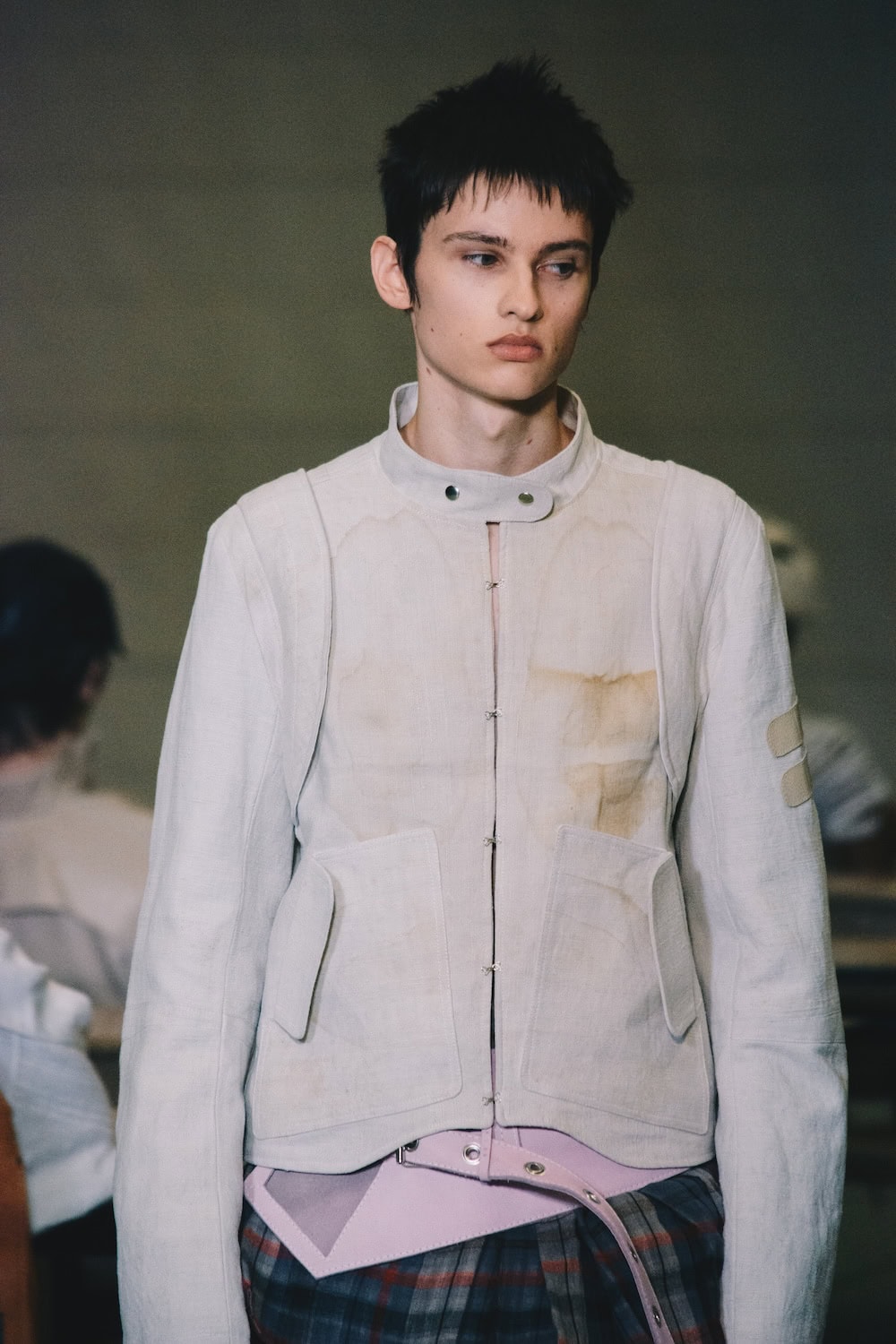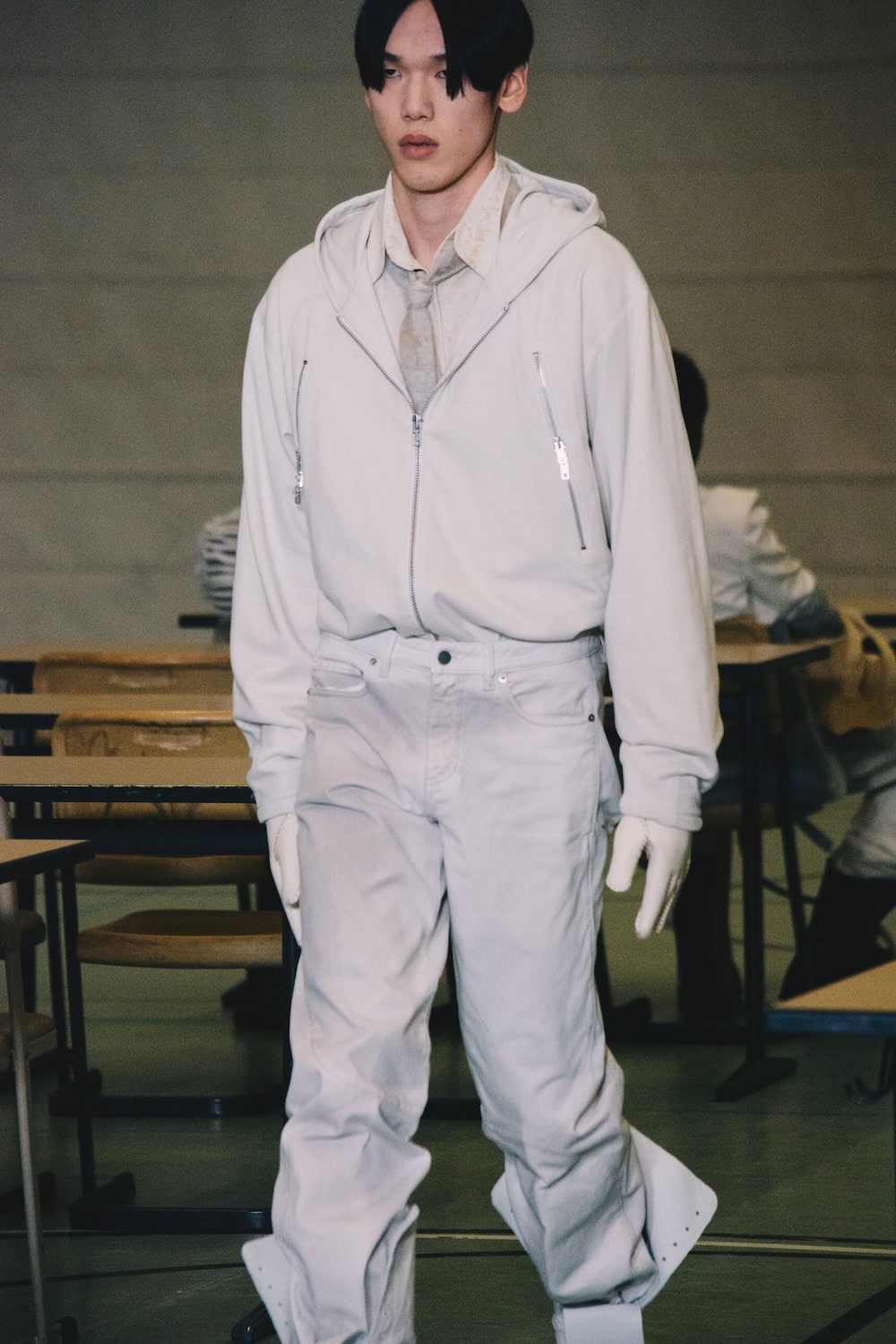Credit Berlin, with its rich history and vibrant present, as a place of daring ideas. Here, a spirit that refuses to settle for the mainstream permeates the air, and with the AW24 collections showcased during Berlin Fashion Week, it becomes evident that creativity here draws from unique sources, distinct from anywhere else. Berlin’s fashion dynamic allows for established veterans and promising newcomers to operate on an equal cognitive level, where its now iconic underground ethos is the subject of reinvention and development. In the same terrain of the club scene and the avant-garde, rise promising ideas flirting with maximalism or kitsch. In a paradoxical harmony, the city embraces minimalism, opening a space for stealth-wealth offerings characterised by hand-heavy construction and resolute sobriety.
On the windy opening day of Berlin Fashion Week, guests were summoned for Olivia Ballard’s AW24 runway show at the Pressecafe in Alexanderplatz–a satellite venue nestled within the iconic socialist modernist structure, the Haus des Berliner Verlages. Hopefully with intentional foresight, the organizers decided to unite the global press and invitees at a venue steeped in historical significance. The Pressecafe, once a renowned meeting spot for journalists and media executives during the operational heyday of the building in the late 1960s, added the ironic and hopeful dimension the show required. Architectural history aside, Ballard’s collection, titled “Le Lit”, which translates to “The Bed,” rendered a oneiric odyssey linked to the realm of sleep. So came the wake-up call, with the initial looks showcasing duvet-inspired garments, notably exemplified in a Charles James-esque duvet puffer jacket crowning a set of ivory white lounging trousers and crew neck top. Ballard’s delivery arbitrarily conveyed the energy of a rough Monday rising through ensembles that encapsulated the core of her vision–tartan applications and comforting velvets and silks, yet certain stylistic interventions interpreted her inspiration through the prism of fashion spectacle, evoking a resonance akin to the avant-garde stylings of, say, Tommy Cash. Despite subtle hints of sleepy execution (pun intended), Ballard skilfully dissected her thematic vision with literary finesse. She tantalisingly hinted that within some beds, there lie cotton pijamas, while in others, the allure of leather. Wink.
In the realm of Berlin fashion, an ode to the underground and unrestricted expression takes center stage, creating a distinctive enclave shaped by its idiosyncrasies. At this juncture between the quintessentially Berlin and the ubiquitous trends of contemporary ready-to-wear, one finds the innovative designer, William Fan. The warming hall of Berlin’s Olympic Stadium was turned into stealth-wealth heaven for Fan’s Fall show, with an array of Marcel Breuer’s Cesca chairs (or convincing replicas) aligned to delineate the runway. In a season where excess dominated the Berlin collections, Fan’s work veered towards the effortless allure of relaxed silhouettes–a sartorial ode to the “off-duty” look, as Fan states in his show notes. Comforting fabrics met low-waist cuts and sharp shirt-making to delineate Fan’s clear vision for the collection–leisure and motion in sync. William Fan seems to enjoy his aesthetic standing within Berlin fashion–an ever-experimental, joyous approach to purism. The sentiment is palpable in the rhine-stoned cashmere jumpers and coats adorned with cascading paillettes, seamlessly disrupting the sobriety of an all-gray ensemble. Even in his minimalist pursuit, the beadwork present in the collection, whether intervening tote bags or creating intriguing cross-body bag straps, serves not as a distraction but as a spotlight on Fan’s commitment to craftsmanship and meticulous accessorising.
The inaugural day of Berlin Fashion Week drew to a close, and as the night struck, on top of Alexanderplatz’s Pressecafe, Willi Neubert’s mural gleamed under the gentle glow of streetlights. Back at the location for Marke’s AW24 runway show, the space had been inundated with totemic sculptures crafted by artist Alesha Klein. Surrounding the works, two rows of guest seating plus numerous standing heads; the buzzing room was about to be put in absolute ease for the next twenty minutes. From the darkness and into the spotlight came models bearing heavy, structured coating, its weighty look intersected by the fragility of ribbons and cotton bibs. The interplay of silhouettes and ideas ran through the entire collection–malleable knits juxtaposed with sharply tailored jackets, precise yet relaxed shirting, and couture-inspired volumes set against distressed cuts. Mario Keine’s treatment of the collection achieved precisely what a designer should envision for their work–conveying a wordless statement about their ethos. As for his AW24 for MARKE, everything was executed to the nines, yet with a deliberate allowance for controlled imperfections, strategically placed to narrate a compelling tale of counterbalance and juxtapositions.
If you dissected the aesthetic elements of Berlin fashion, had them undergo a refinement process, and later pieced them back together; you would get Richert Beil. That’s exactly what Jale Richert and Michele Beil did to commemorate the 10th anniversary of their label presenting an AW24 that revised, reinterpreted, and aimed to revamp, the codes of their debut collection shown back in 2015. Inclusive to the point of a standing crowd and guests laying down suitcases on the venue’s floor to create a self-imposed front row, at Richert Beil’s showcase, everyone was welcomed. The show thrived in age, body, race, and gender inclusion, a vision that extended all the way to the materials used to craft the collection. Performance fabric met constricting leather, while latex was used to create romantically voluminous puffed sleeves. Denim underwent a thorough exploration, with the designers researching its softer nuances through quintessential jackets in light washes, while also its more structured facet in a set of perfectly pieced straight-cut jeans and mini skirts.
Berlin Fashion Week stands out with its showcases for bold aesthetic statements, often drawn to the underground, the minimalist, or the absolute opposite, kitsch, and camp. But let’s start looking at Berlin as a place where innovative craftsmanship shines, especially upcycled. In her AW24 collection, French designer Lou de Bètoly played both alchemist and magician, using her upcycling expertise to create garments that, through their components, provoked a reevaluation of perception. Bètoly confronted the delicacy of tender yarns with the intricacy and complexity inherent in the processes required to craft each piece. This was most visible in the combination of crochet and knits, which first manifested on the runway in a cropped cardigan with crystals and beads intricately hand-woven–a hallmark technique of the label. As for the game of illusions, Bètoly turned vintage undergarment straps into sophisticated form-fitting tops, fashioned skirts from repurposed vintage leather trousers, and crafted handbags using upcycled leather jackets or lingerie.
Bid farewell to the 2000s and usher in the 2010s. It’s hard to believe, but more than a decade has passed since the second-wave pop culture renaissance of this era, a period that birthed the celebrities we revere today, and many of the fashions the collections revise in recent seasons. For many spectators, this author included, runway shows rarely transport us to moments we can personally recall. They tend to be either too fantastical or from a distant past beyond the reach of our memories. However, in her AW24 collection for SF 1 OG, Rosa Marga Dahl accomplished precisely that—giving us a fresh memory that resonated with most guests in the room: our high school days. In the gymnasium of the Ernst-Reuter-School in Berlin-Mitte, a fashion show. Sat courtside on improvised bleachers, guests looked into a setting of school desks aligned facing a mobile chalkboard, and a bigger desk with–surprise–apples. The story was tacit, and the references were on your face. A hint that the collection about to unfold on the runway reminisced a memory of teenage days. And thus emerged the first model, iPod Nano in hand, mimicking the browsing of a rock tune that played throughout the show, clad in an ombre-bleached suit. Cropped corset-like tops made an appearance, along with unevenly striped shirts. Checked neckties coexisted with sturdy boots, juxtaposed against camouflage leather vests and tartan skirts over pants. A fusion where private school meets the projects. As utopian as the looks may seem, it is easy to envision contemporary school-goers donning any of the outfits in the collection. Dissect them from the narrative-heavy styling, and it’s certain that many of us grown-ups would, too.
